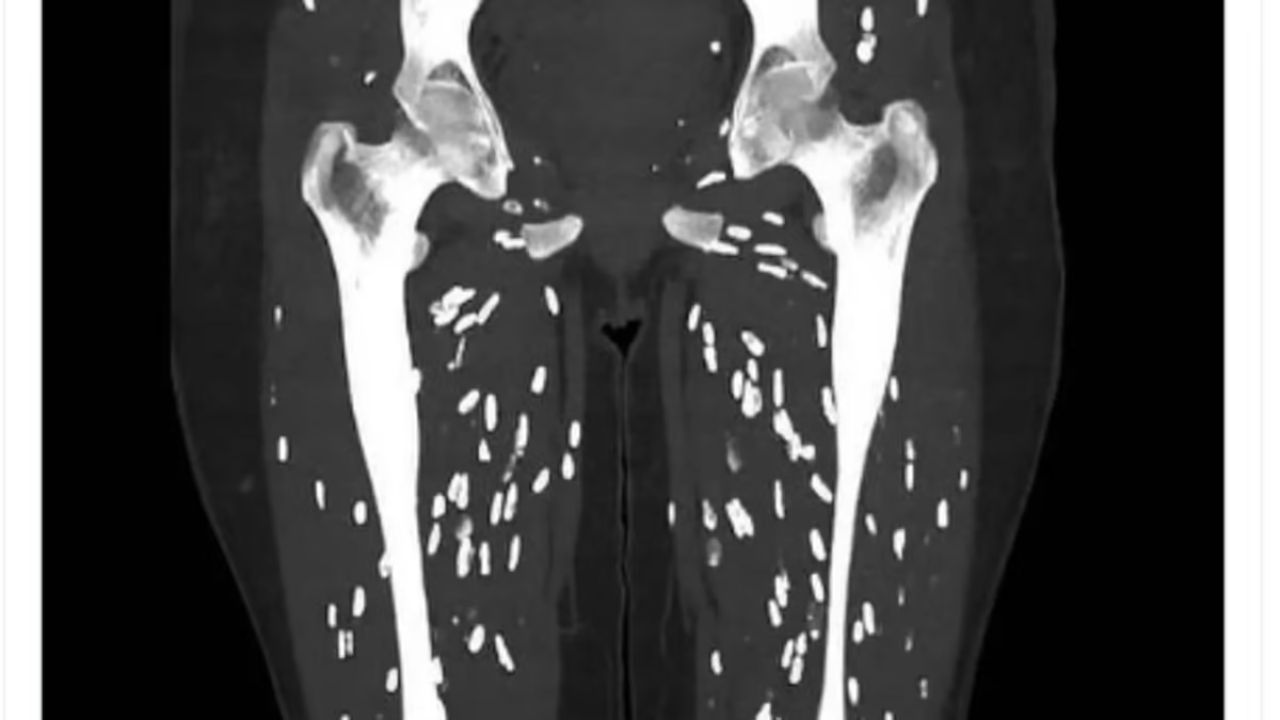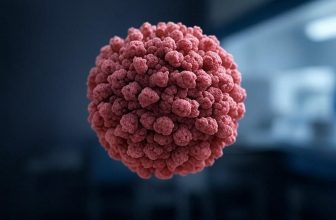
Food safety is something many of us take for granted, but a recent case shared by Dr. Sam Ghali, an emergency room physician, has reminded the world of the dangers lurking in our kitchens. Dr. Ghali posted a startling CT scan on social media that showed a patient’s legs filled with parasitic cysts after consuming undercooked pork. This case, which highlights the serious risks associated with a parasitic infection known as cysticercosis, has captured global attention. Let’s dive deeper into what happened, the risks involved, and how you can protect yourself and your loved ones.
What is Cysticercosis?
Cysticercosis is a parasitic infection caused by the larval stage of Taenia solium, commonly known as the pork tapeworm. This infection occurs when a person consumes food, particularly pork, contaminated with the tapeworm’s larval cysts. Once ingested, these larvae can penetrate the intestinal wall and enter the bloodstream, traveling to various parts of the body such as muscles, eyes, and even the brain. The infection is particularly common in regions where pork is a staple food and where sanitation practices may be lacking.
The Case Shared by Dr. Sam Ghali
The case that Dr. Ghali shared involved a patient who presented with severe muscle pain and weakness. Upon performing a CT scan, the medical team discovered that the patient’s leg muscles were filled with tiny, rice grain-like calcifications. These calcifications were, in fact, dead larval cysts caused by the body’s immune response to the parasitic infection. Dr. Ghali described this as “one of the craziest CT scans I’ve ever seen,” and his followers on social media were both shocked and intrigued by the image【7†source】【8†source】.
The infection had spread extensively through the patient’s muscles, but what made the case even more alarming was the potential for these cysts to migrate to the brain, causing a condition known as neurocysticercosis. When the larvae infect brain tissue, they can lead to severe neurological issues such as seizures, headaches, and confusion. In some cases, neurocysticercosis can be fatal if not treated promptly【9†source】.
Understanding the Parasite: Taenia solium
The pork tapeworm, Taenia solium, has a complex lifecycle that allows it to infect both pigs and humans. When humans consume undercooked or raw pork contaminated with the tapeworm’s larvae, the infection begins. The larvae penetrate the intestinal wall and can spread to almost any part of the body through the bloodstream. Common sites of infection include the brain, eyes, and muscles, where the larvae form cysts known as cysticerci【9†source】.
One of the most dangerous aspects of this infection is neurocysticercosis, where cysts form in the brain. This condition is a leading cause of epilepsy in many regions where the parasite is endemic, contributing to a significant public health burden【8†source】.
Global Impact and Statistics
Cysticercosis is a global health concern, particularly in areas where pork is commonly consumed and where sanitation is inadequate. According to estimates, around 50 million people worldwide are infected with Taenia solium each year, resulting in approximately 50,000 deaths. The World Health Organization (WHO) notes that in regions where humans and pigs live in close proximity, cysticercosis can be associated with up to 70% of epilepsy cases【8†source】.
Diagnosis and Treatment
Diagnosing cysticercosis can be challenging, as the symptoms vary depending on the location and severity of the infection. CT scans and MRIs are commonly used to detect the presence of cysts in muscles and brain tissue. Blood tests may also help confirm the diagnosis.
Treatment depends on the severity and location of the infection. In many cases, anti-parasitic medications are prescribed to kill the larvae, along with corticosteroids to reduce inflammation. In cases of neurocysticercosis, additional treatments such as anti-epileptic drugs or surgery may be required. While the prognosis is generally good, some cases can be fatal if not treated promptly【9†source】.
Prevention Tips
The best way to prevent cysticercosis is through proper food handling and hygiene practices. Here are some key prevention tips:
- Cook Pork Thoroughly: Ensure that pork is cooked to an internal temperature of at least 160°F (71°C) to kill any parasites that may be present.
- Practice Good Hygiene: Always wash your hands with soap and water before handling food and after using the restroom to prevent fecal-oral contamination.
- Improve Sanitation: In regions where the disease is common, improving sanitation and separating pigs from human living areas can significantly reduce the risk of infection.
Final Thoughts
The shocking case shared by Dr. Sam Ghali serves as a stark reminder of the hidden dangers that can come from something as simple as a poorly cooked meal. Cysticercosis is a preventable condition, and by taking the proper precautions, you can protect yourself and your family from this potentially life-threatening infection. Always ensure your food is cooked thoroughly and practice good hygiene to keep parasites at bay.
References
This blog not only raises awareness about the dangers of undercooked pork but also emphasizes the importance of food safety and hygiene practices in preventing parasitic infections.







